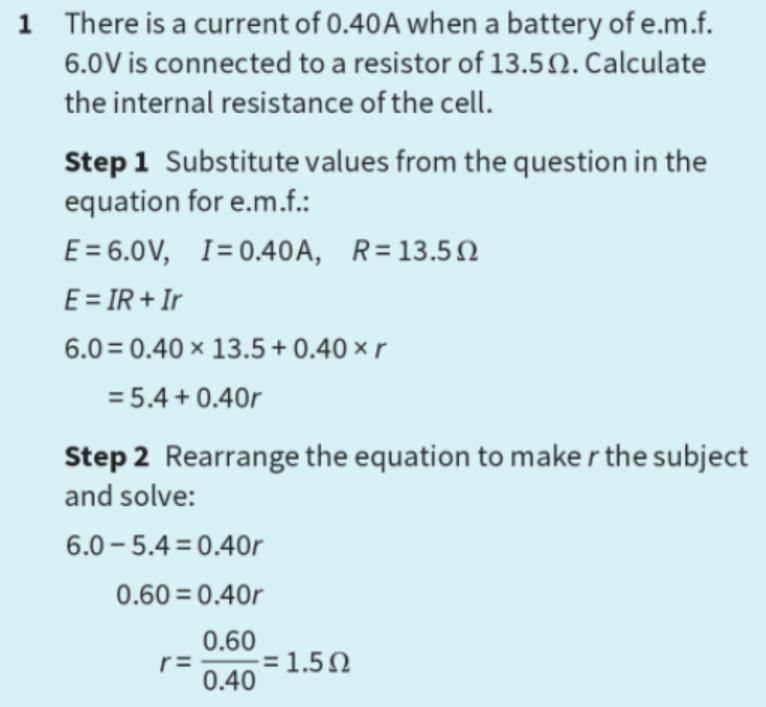Test: EMFs & Internal Resistance - JEE MCQ
Test Description
10 Questions MCQ Test - Test: EMFs & Internal Resistance
Test: EMFs & Internal Resistance for JEE 2025 is part of JEE preparation. The Test: EMFs & Internal Resistance questions and answers have been prepared
according to the JEE exam syllabus.The Test: EMFs & Internal Resistance MCQs are made for JEE 2025 Exam.
Find important definitions, questions, notes, meanings, examples, exercises, MCQs and online tests for Test: EMFs & Internal Resistance below.
Solutions of Test: EMFs & Internal Resistance questions in English are available as part of our course for JEE & Test: EMFs & Internal Resistance solutions in
Hindi for JEE course.
Download more important topics, notes, lectures and mock test series for JEE Exam by signing up for free. Attempt Test: EMFs & Internal Resistance | 10 questions in 10 minutes | Mock test for JEE preparation | Free important questions MCQ to study for JEE Exam | Download free PDF with solutions
Test: EMFs & Internal Resistance - Question 1
A car battery has ________ resistance than a dry cell.
Detailed Solution for Test: EMFs & Internal Resistance - Question 1
Test: EMFs & Internal Resistance - Question 2
The internal resistance of a battery cannot be measured with a conventional multimeter
Detailed Solution for Test: EMFs & Internal Resistance - Question 2
Detailed Solution for Test: EMFs & Internal Resistance - Question 3
Detailed Solution for Test: EMFs & Internal Resistance - Question 4
Test: EMFs & Internal Resistance - Question 5
Under what condition, the current drawn from the cell is maximum?
Detailed Solution for Test: EMFs & Internal Resistance - Question 5
Test: EMFs & Internal Resistance - Question 6
Internal resistance of cell when there is current of 0.40 A when a battery of 6.0 V is connected to a resistor of 13.5 Ω is
Detailed Solution for Test: EMFs & Internal Resistance - Question 6
Test: EMFs & Internal Resistance - Question 7
Two terminals of a cell of emf 2.5 V are connected to the two ends of the 10 ohm resistance coil. If the current in the circuit is 0.2 A, then the internal resistance of the cell is
Detailed Solution for Test: EMFs & Internal Resistance - Question 7
Detailed Solution for Test: EMFs & Internal Resistance - Question 8
Test: EMFs & Internal Resistance - Question 9
What is the maximum current that can be drawn from a cell of emf E and internal resistance r connected to an external resistance R?
Detailed Solution for Test: EMFs & Internal Resistance - Question 9
Detailed Solution for Test: EMFs & Internal Resistance - Question 10
Information about Test: EMFs & Internal Resistance Page
In this test you can find the Exam questions for Test: EMFs & Internal Resistance solved & explained in the simplest way possible.
Besides giving Questions and answers for Test: EMFs & Internal Resistance, EduRev gives you an ample number of Online tests for practice
Download as PDF




















